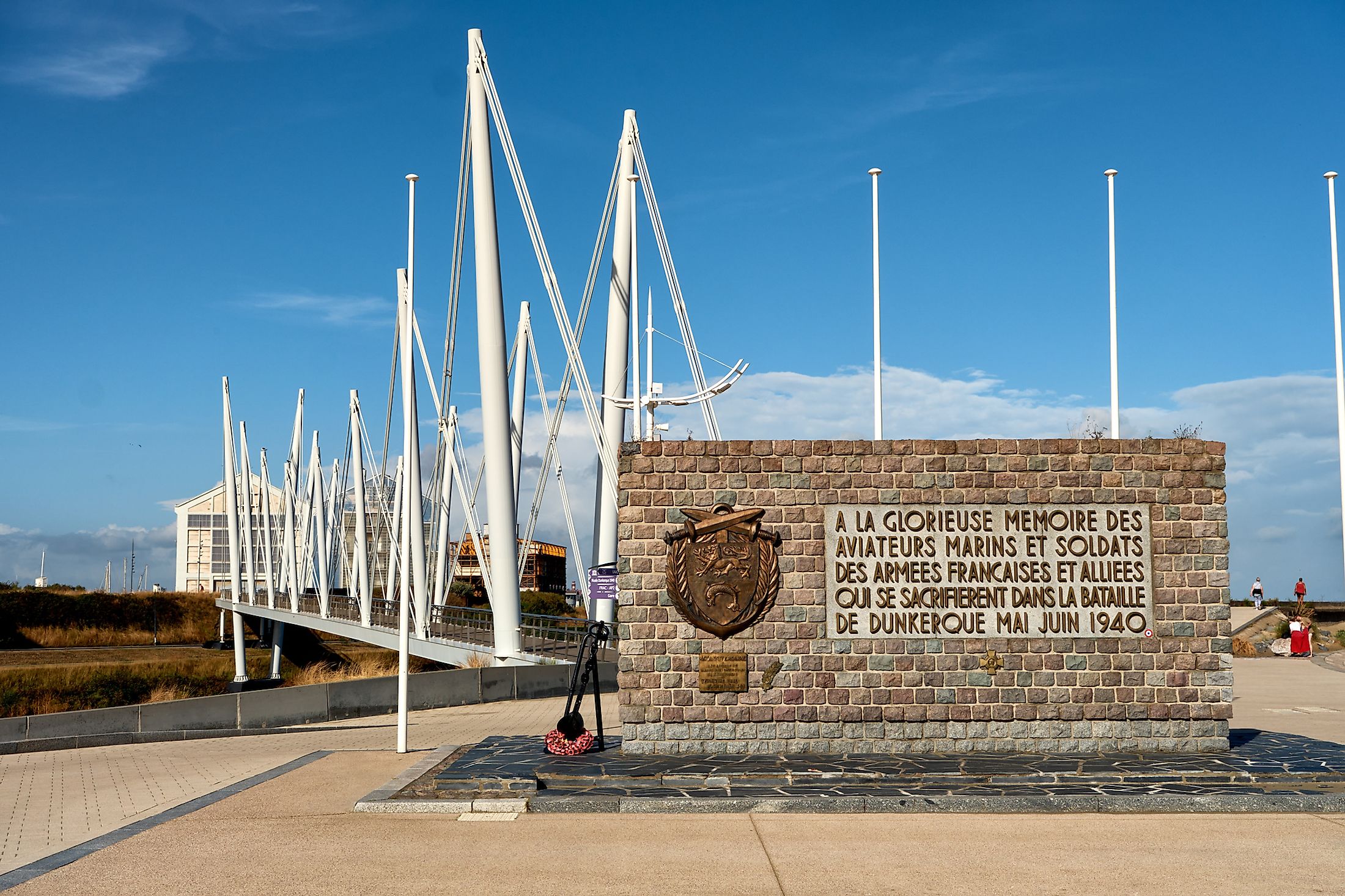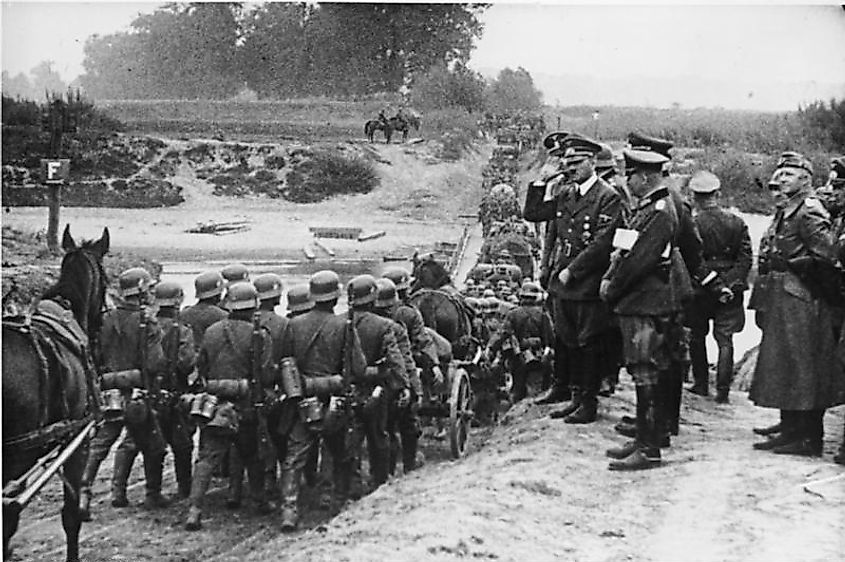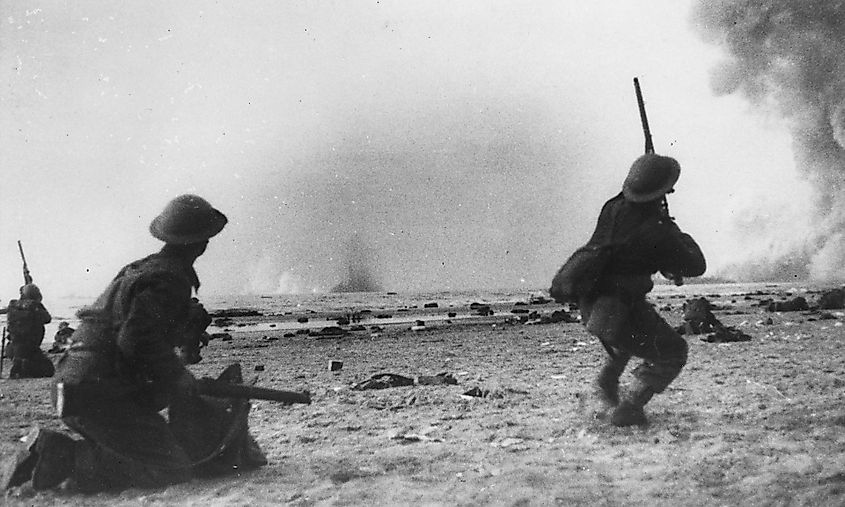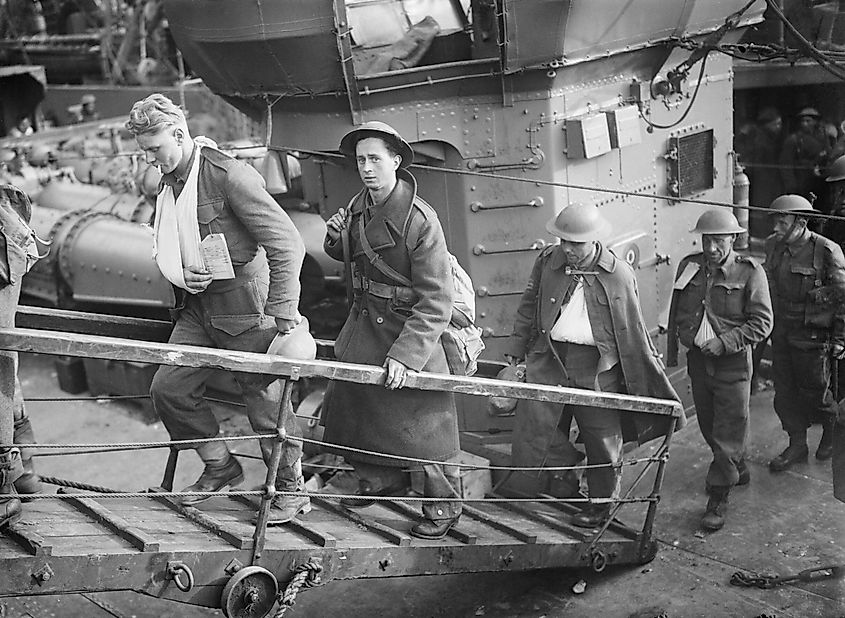
Battle Of Dunkirk
The Battle of Dunkirk is often portrayed as a key victory for the Allies. However, while it saw the evacuation of hundreds of thousands of troops, it also resulted in a significant amount of equipment being lost and the Allies losing any foothold on the European continent. Thus, while undeniably important for the continued Allied war effort, the events at Dunkirk should perhaps be understood with more nuance.
Background

World War II began on September 1, 1939 when Germany invaded Poland. This was followed by the Soviet Union (USSR) also invading the country on September 17. The battle was quick, with the Polish Army being mostly defeated by early October. However, what followed was a roughly half-a-year period in which little fighting occurred. This was partially due to France's Maginot Line, a series of fortifications on the French-German border. Fighting eventually recommenced on April 9 with the invasion of Denmark and Norway. This was followed by the invasion of the Low Countries on May 10. Crucially, Belgium held the key to Germany's aspirations in France. The French-Belgian border was mostly covered by the Ardennes Forest. Therefore, with the French believing that it would function as an effective natural barrier, it was less heavily fortified. But, the German Army (the Wehrmacht) simply went through the forest, surprising the Allies in the process.
The Battle Of Dunkirk

Once the invasion began, the Wehrmacht raced to the English Channel to cut off the Allies, and by late May 1940, English and French soldiers were surrounded at the beaches in Dunkirk. When combined with Belgium's capitulation on May 28, the Allies were in a very precarious position. However, for reasons that are still debated by historians, the German Army never closed in to completely finish them off. Some believe that Hitler wanted to give his soldiers time to rest. Others assert that it was due to the Führer's ultimate disinterest in the Western front. Whatever the reason, Hitler's hesitation gave the British time to organize an evacuation. Known as Operation Dynamo, hundreds of boats, two-thirds of which were civilian, arrived at Dunkirk from May 26 to June 4. In total, about 340,000 Allied troops were evacuated, 200,000 of whom were British. Nonetheless, while this evacuation was an admittedly near-miraculous endeavor, and despite it being portrayed as a victory by British propaganda, it was still a strategic catastrophe. Indeed, most Allied equipment was left behind, and they now had no foothold on the European continent.
The Aftermath

France fell in about six weeks, with all major fighting ending by June 25. The Germans directly occupied about 60 percent of the country, whereas the other 40 percent was established as a Nazi puppet state. Known as Vichy France (named after its capital), the regime was headed by Philippe Pétain, a respected First World War general. This leader, combined with French politics being divided between the far left and the far-right in the 1930s, meant that the Germans had little difficulty finding collaborators. These factors also played a key role in most French colonies staying loyal to the regime.
With France out of the way, Germany could now focus its attention elsewhere. Its first target was the United Kingdom (UK). But, before a landing on the British Isles could occur, it needed to deal with the British air force (the Royal Air Force, or RAF). This ultimately proved to be too much for the Germans, and plans for a land invasion of the UK were abandoned by the spring of 1941. Also in 1940 and 1941, Italy began military operations in North Africa and the Balkans. However, the Italian Army proved incompetent, forcing the Wehrmacht to come to its aid. Finally, on June 22, 1941, Germany invaded the Soviet Union (USSR). Known as Operation Barbarossa, the invasion signified the opening of the war's largest and most important front. Indeed, it was essential for Hitler in his attempts to procure Lebensraum (living space) in the East. At the same time, the sheer size of the USSR meant that the Nazis' resources were stretched too thin, contributing to Germany losing the war.
In conclusion, the Battle of Dunkirk was a critical event in World War II. But, while the evacuation of hundreds of thousands of troops was important, it also signified a major Allied loss, with the Germans now more or less completely controlling the European continent. This allowed them to turn their attention elsewhere, setting the stage for the invasion of the USSR.











